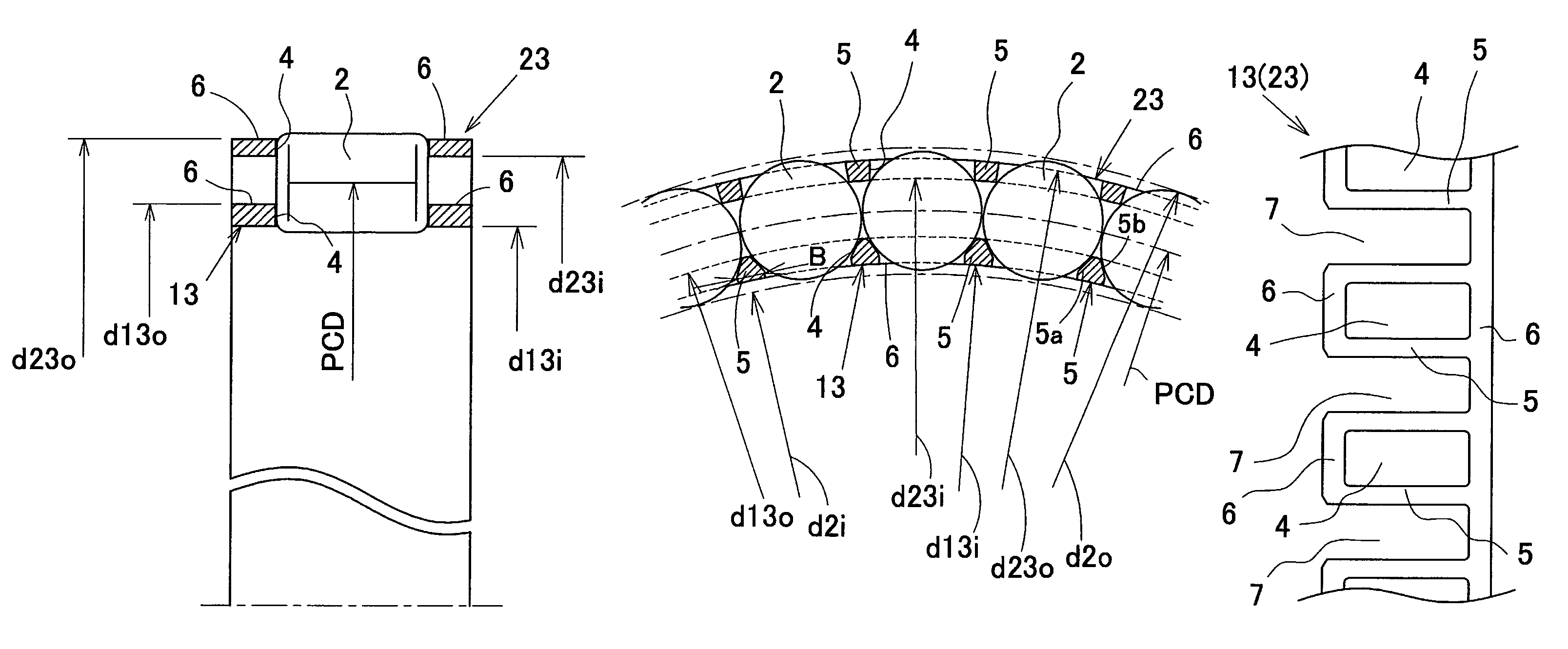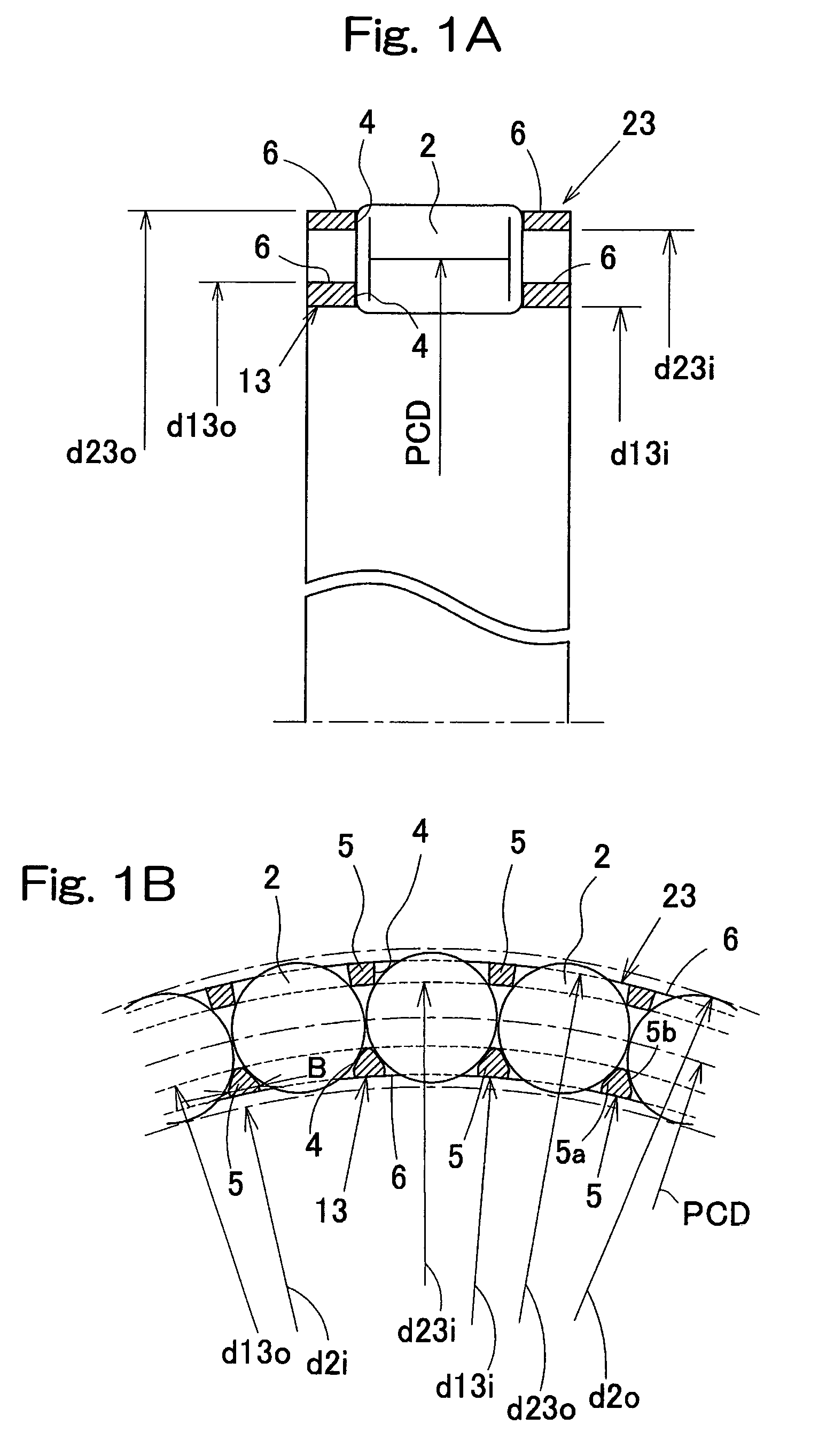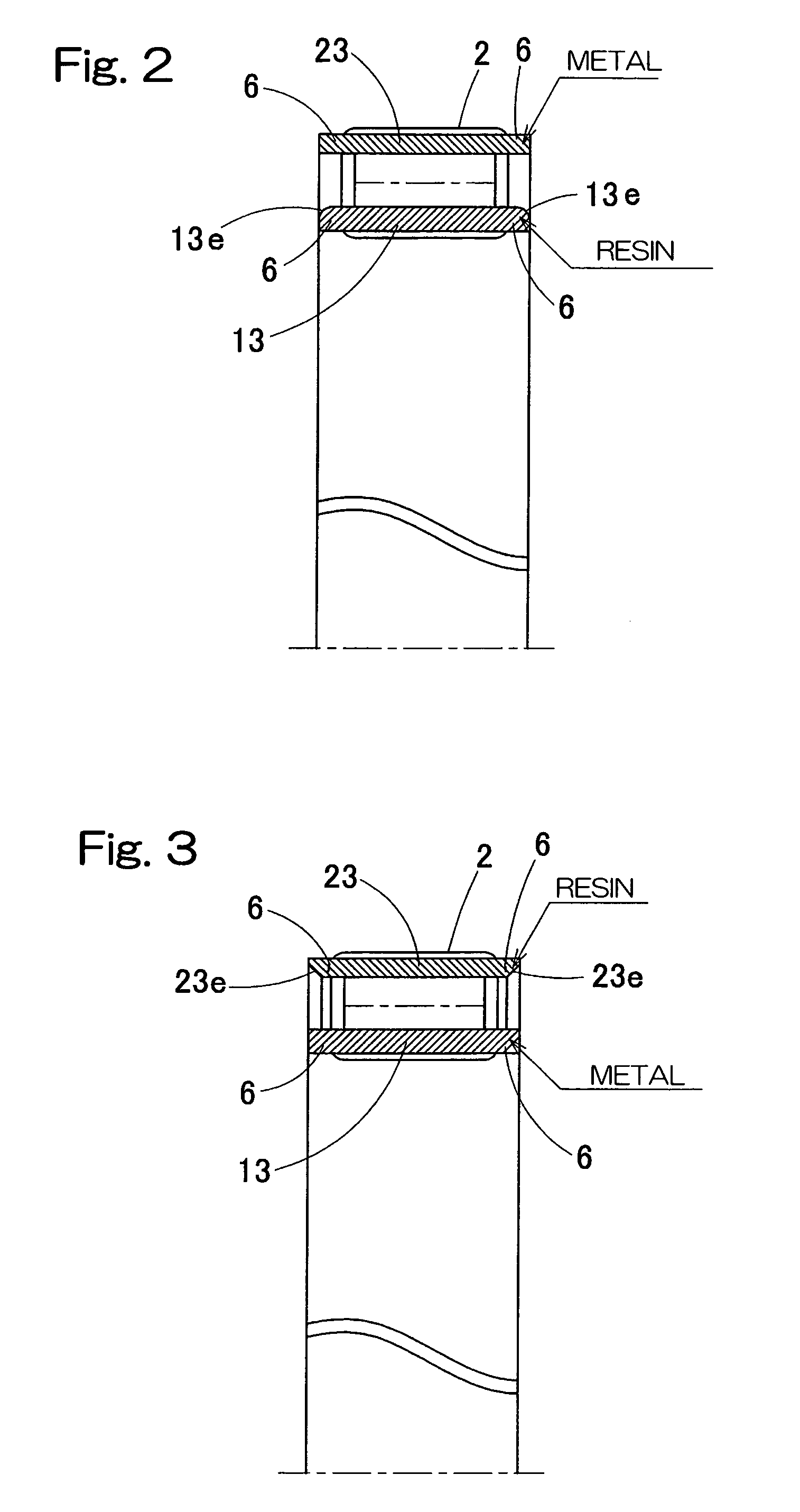Roller bearing assembly
a technology of roller bearings and bearings, which is applied in the direction of bearings, shafts and bearings, rotary machine parts, etc., can solve the problems of reducing the strength of roller retainers, limiting the machining, and unable to increase the thickness of plates, so as to achieve the effect of increasing the assemblability and precision, reducing the flexure deformation of roller retainers, and reducing the number of parts
- Summary
- Abstract
- Description
- Claims
- Application Information
AI Technical Summary
Benefits of technology
Problems solved by technology
Method used
Image
Examples
first embodiment
[0089]Hereinafter, various preferred embodiments of the present invention will be described in detail with reference to FIGS. 2 to 17. It is to be noted that unless otherwise specified, those embodiments are similar to the first embodiment shown and described with reference to FIG. 1.
second embodiment
[0090]Referring now to FIG. 2 showing the present invention, the inner roller retainer 13 made of the synthetic resin has radially outer edge portions 13e which may be tapered or be so shaped as to be arcuately rounded in section to represent an axially outwardly constricted edge portion. The axially outwardly constricted edge portions are effective to facilitate a smooth insertion of the inner roller retainer 13 in a direction inwardly of the circular row of the rollers 2 during assemblage, with the assemblability further increased consequently.
third embodiment
[0091]In the present invention shown in FIG. 3, of the inner and outer roller retainers 13 and 23, the inner roller retainer 13 is made of a metallic material and the outer roller retainer 23 is made of a synthetic resin. Even in such case, as compared with the inner and outer roller retainers 13 and 23 both made of a synthetic resin, the retainer strength as a combination type roller bearing can increase. Also, even though the inner roller retainer 13 is made of a metallic material, since the outer roller retainer 23 is made of a synthetic resin, the elastic deformation thereof can be effectively utilized to facilitate incorporation of the rollers 2.
[0092]Where the outer roller retainer 23 is made of a synthetic resin, opposite radially inner edge portions 23e of this outer roller retainer 23 may be so shaped as to be arcuately rounded in section to represent an axially outwardly constricted edge portion. Thereby, in a manner similar to the embodiment shown in and described with re...
PUM
 Login to View More
Login to View More Abstract
Description
Claims
Application Information
 Login to View More
Login to View More - R&D
- Intellectual Property
- Life Sciences
- Materials
- Tech Scout
- Unparalleled Data Quality
- Higher Quality Content
- 60% Fewer Hallucinations
Browse by: Latest US Patents, China's latest patents, Technical Efficacy Thesaurus, Application Domain, Technology Topic, Popular Technical Reports.
© 2025 PatSnap. All rights reserved.Legal|Privacy policy|Modern Slavery Act Transparency Statement|Sitemap|About US| Contact US: help@patsnap.com



